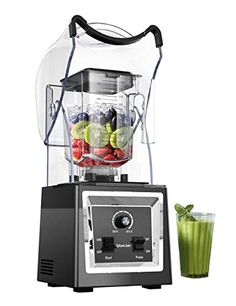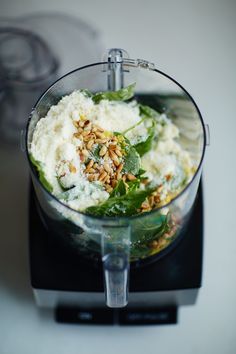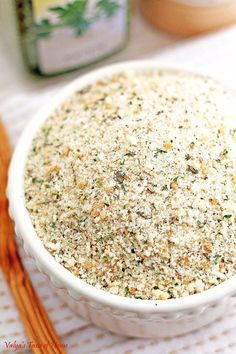Is It Possible to Use a Blender as a Food Processor?

Many types of equipment have been produced in modern times to make work more straightforward and efficient in every discipline, and the kitchen is no exception. Several gadgets have become ingrained in our regular culinary routines. However, the challenge emerges when choosing which gadget to buy, especially for aspiring chefs.
This issue comes from a large number of appliances on the market that practically all fulfill the same purpose. The issue that remains is: which appliance is most suited for your needs?
Whether or not a Food Processor may be used as a Blender and vice versa is frequently asked. This misconception comes from the fact that these two appliances have many characteristics in common. This isn’t to say that distinction doesn’t exist. Can you use a Blender as a Food Processor by answering the question? This article will assist in resolving one such ambiguity.
This article will clear up any misunderstandings by explaining the differences between the two appliances and, as a result, will address the issue of whether a Blender can be used as a Food Processor and vice versa.
So, how long are we going to wait?
All right, let’s get this party started!
To begin, let’s have a look at the descriptions for both the blender and the food processor in question.
Blender
A blender is kitchen equipment used to combine food and other ingredients. Its primary function is to combine liquids. This device accomplishes this by producing a vortex, which draws items to the center and blends them.
A full-sized blender can be anywhere from 8 to 22 inches tall and weigh anything 4 to 19 pounds. If you enjoy producing smoothies and soups, the blender is the finest tool for the job.
These gadgets don’t have the same slicing, grating, and chopping capabilities as a Food Processor. Still, they excel at blitzing ingredients into smooth combinations, and most can also crush ice and prepare dips.
Some blenders come with extra attachments for grinding coffee, nuts, and other items.
Standing Blenders are divided into two categories: Jug Blenders, which can create huge quantities at once, and Mini Blenders, which can only prepare 1-2 servings at a time. These small blenders’ blending cups may also be used as a cup. These Blenders may cost anything from $20 to $500.
Quick activities like creating a dip or blending soups and smoothies are best done with hand or stick blenders. However, this work might become exhausting if done over an extended period. These Blenders are smaller in size. On the other hand, the more costly models come with additional attachments and enhanced food processing capabilities.
Food Processors

As a piece of equipment, the food processor is the most excellent savory cook. These machines may be quite flexible with several attachments for operations such as baking, chopping, grating, pureeing, and slicing.
These gadgets range in size from 2-cup choppers for 1-2 persons to 20-cup choppers designed for use in a restaurant kitchen. These range in price from $40 to $700, with the more costly models incorporating attachments such as grinding mills, citrus presses, blender jugs, and various sized bowls, among other things.
This gadget is undoubtedly more flexible, but it also increases the number of items that must be cleaned and requires more storage space than a blender.
So, if you frequently cook in large amounts, a food processor is the ideal option. If you only need an appliance for small chores like chopping onions or creating dip, the Mini-Chopper is the way to go.
Now that you’ve learned more about both appliances, it’s time to see if they may be utilized interchangeably.
Is it possible to use a food processor as a blender?
The soups can be blended in a Food Processor in small quantities, but hot liquids must be handled with caution. However, the final result will not be as smooth when combined in a food processor. Although any device may crush ice, a high-quality blender will undoubtedly perform a better job.
Is it possible to substitute a blender for a food processor?
The answer to this question will be determined by the food that will be prepared using the equipment.
Consider the following meals to demonstrate how the task of a Food Processor may be done in a Blender:
Vegetables
- With the aid of a tamper, you can achieve some chopping with a Blender.
- Put your blender to the lowest setting and press the produce down towards the blade using a tamper to chop vegetables.
Food for Infants
If you want to create Baby food at home using a blender, put a maximum of one cup of freshly cooked veggies in the jar and blend on high to produce a smooth mixture.
Crumbs of bread

To make the Bread Crumbs:
- Take no more than two slices of dried bread and chop them up into little bits in the blender.
- Use the pulse option for 30 seconds or until the desired consistency is achieved.
- If your appliance doesn’t offer a pulse option, run it at high speed for 30 seconds to complete the task.
Shredded cheese
- To make the shredded cheese, chop it into 2-inch pieces and combine them.
- Then, for 30 seconds, maintain the pulse on high until you get the desired consistency.
Ice
To smash the ice in the blender, place 5-6 ice cubes in the blender at a time and process at high speed until the crushed ice reaches the desired consistency.
Pesto
- 3/4 cup olive oil, 3/4 cup cheese, roughly 12 cups basil, three garlic cloves, and 1/4 cup pine nuts are all you need to make pesto.
- Add everything to the blender jar and mix on medium until the pesto sauce is smooth.
Dough
- The dough can only be made with an industrial blender.
- It will prevent the dough from rising correctly due to air penetration. Since its slim form and sharp blades, a blender designed for domestic usage is inappropriate for preparing the dough.
So, those as mentioned above are some of the ways in which blenders and food processors may be substituted for one another.
Blender Experts’ Recommendations
In this portion of the article, I’ll go over some things you should keep in mind when using the blender. As a result, here are some key considerations to consider:
- Some Blenders come with attachments that may be purchased to help the task go even faster. Tamper sticks, serving cups, ice blades jars, and other items may be included in these accessories.
- You must use the highest setting on the blender for pureed foods. Most blenders have three-speed settings but six more costly ones. Turn on the lowest settings if you want your meal to be rough and chunky.
- If you’re not sure what settings you’ll need to cook anything, add the ingredients one at a time so you can stop if something doesn’t turn out nicely. It will ensure that none of the components are wasted.
- The blender’s volume handling capability is substantially lower than a Food Processor. As a result, only use a quarter of the ingredients you used in the food processor and cook in batches.
- So, hopefully, your misunderstanding about the interchangeability of the terms Blender and Food Processor is now much evident.
We may now go on to the conclusion of the article.
Conclusion
We may sum up this post by noting that your choice between the blender and the Food Processor will determine the task you want to do the most.
Both of these appliances are required to prepare a wide range of dishes. If you’re making soups and smoothies, a Blender will suffice; but, if you want to use it for other tasks, such as chopping, you’ll need to invest in a Food Processor.











